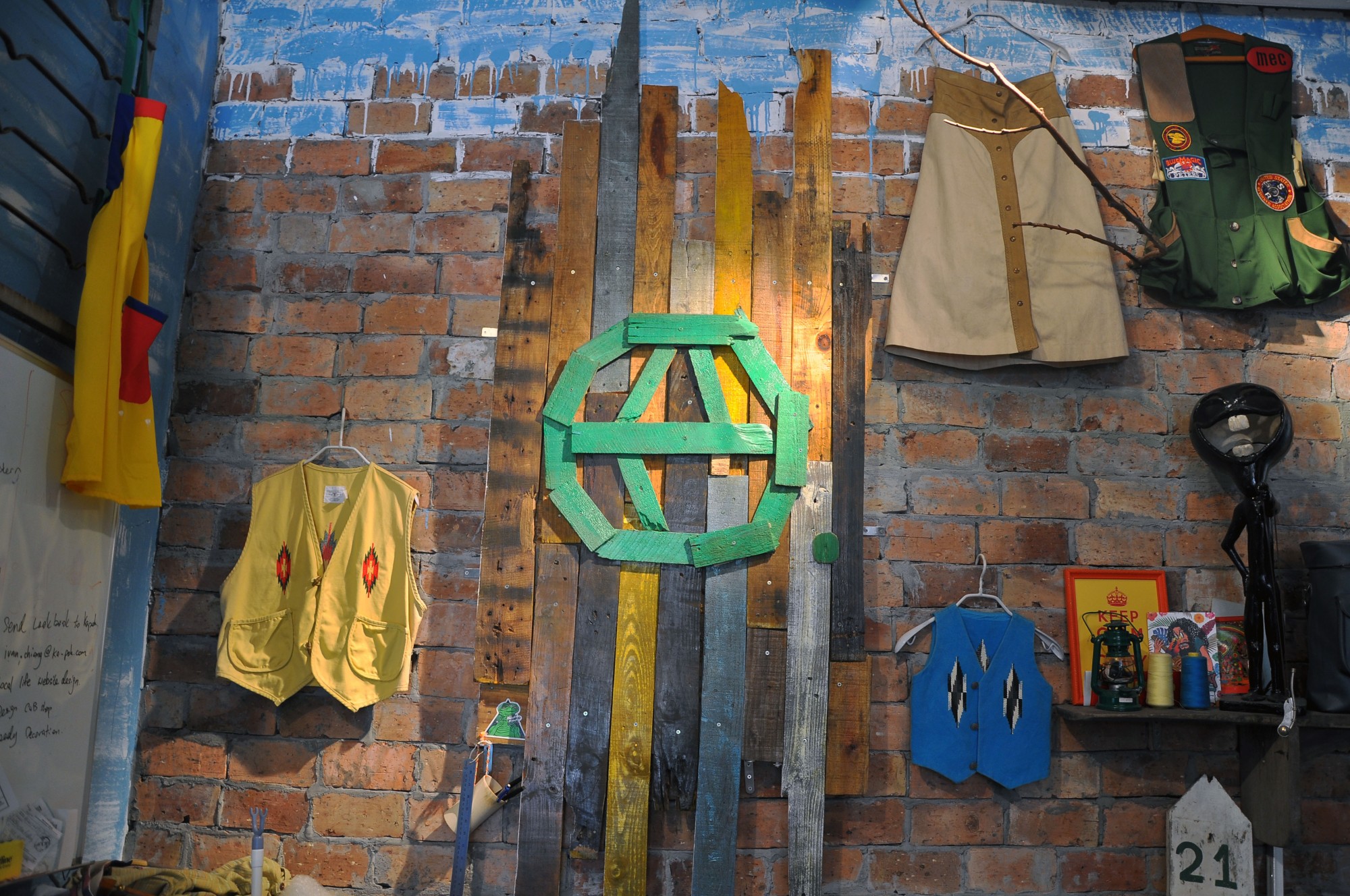Swap fast fashion for green fashion
By Vanessa Cheung
In between the shops selling shrimp paste and herbal tea, EARTH.er’s colourful products attract the attention of visitors taking a relaxing stroll in Tai O. Stepping into the shop, you are surrounded by clothes and accessories that are not simply fashionable, but also environmentally-friendly.
Benny Yuen Chun-wai is the director of EARTH.er. Thanks to his fashion and design professors, 26-year-old Yuen learned that artists and designers should be socially responsible. The name EARTH.er represents this belief. Yuen says the names of occupations often end in “er”.
“I hope there is an identity called earther, that means people who are responsible to the Earth,” says Yuen. The tiny dot in the brand name represents the human being. Yuen thinks that people should respect nature and show humility.
Fabric dyeing is a fundamental process in producing garments, but the process uses a lot of water and chemical dyes. The dyed fabric may not cause health problems for the consumers but the by-products can seriously pollute water after disposal.
In addition, workers’ health is damaged after prolonged contact with chemical dyes. This problem is particularly severe in mainland China. “They have a saying that if you want to know what the latest trendy colour is, you can tell from the workers’ skin colour,” says Yuen.
He believes natural dyeing can ease the problem so he began looking for factories that use natural dyes. He found a small factory which practices natural dyeing in northern Thailand. The materials used at the factory, which is a 10-hour car ride from Bangkok, include plants and insects. For example, yellow dye can be made from the trunks of jack fruit trees and pink can be made from the secretions of lac insects.
In addition to eco-friendly production methods, EARTH.er also cooperates with fair trade organisations and sends dyed fabrics to them for cutting and sewing. Also, EARTH.er designs, produces and sells bags, wallets and other accessories.
However, Yuen pays more to make environmentally-friendly products. Natural dyeing takes longer than chemical dyeing. It takes about a month to dye 30 yards of fabric with natural dyes but several thousand yards of fabric can be dyed with chemicals in a matter of days.
Also, natural dyes are subject to the weather – fabrics dye better in the dry season than in the rainy season and colours are unstable and often differ from expectations. This means re-dyeing may be necessary. The production cost

s of using natural dyes are 40 to 50 per cent higher than using chemical dyes.
But Yuen believes the principles behind EARTH.er make it unique. To Yuen, being responsible about the Earth also means helping people who are in need. EARTH.er gives five to 10 per cent of profits to sponsor six children through World Vision International.
If you support Yuen’s idea of being an earther or simply want to add some stylish items to your wardrobe, visit EARTH.er’s Tai O shop or the pop-up store in Causeway Bay. EARTH.er also accepts online orders and offers delivery through the mail. To know more, please visit the Facebook
page of EARTH.er: www.facebook.com/EARTH.er.EARTH
Edited by Amy Leung









































